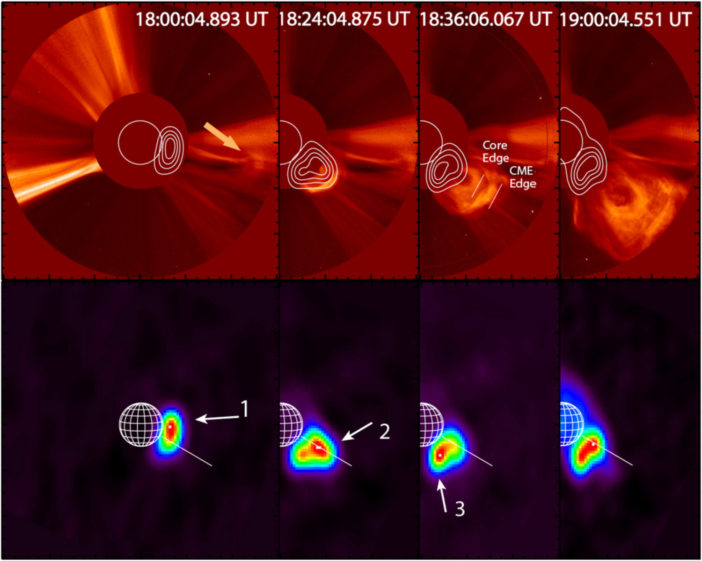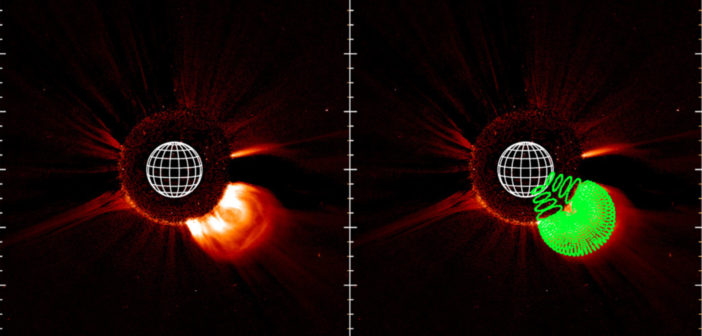Learning about enormous solar explosions requires both observations that span the electromagnetic spectrum and careful modeling. The figure above shows a white-light image taken during a radio burst that was accompanied by a coronal mass ejection — a rapid release of plasma and radiation from the Sun’s outer atmosphere — in 2015. A new study led by Sherry Chhabra (New Jersey Institute of Technology and NASA Goddard SFC) presents long-wavelength radio images of this burst captured with the Owens Valley Radio Observatory. The team then uses the radio observations and white-light images from SOHO/LASCO to reconstruct the coronal mass ejection as it is released from the Sun; the model is shown above in the right panel as the green wireframe overlaid on the LASCO image (which is roughly 3° x 3°). The combined information about this burst tells us more about its properties and emission mechanisms, helping us to understand how energy is released from the Sun. For more information, check out the original article below.

The different stages of eruption can be seen from left to right in these white-light (top) and radio (contours and bottom) images tracking the radio burst and associated CME. [Chhabra et al. 2020]
Citation
“Imaging Spectroscopy of CME-associated Solar Radio Bursts using OVRO-LWA,” Sherry Chhabra et al 2021 ApJ 906 132. doi:10.3847/1538-4357/abc94b

